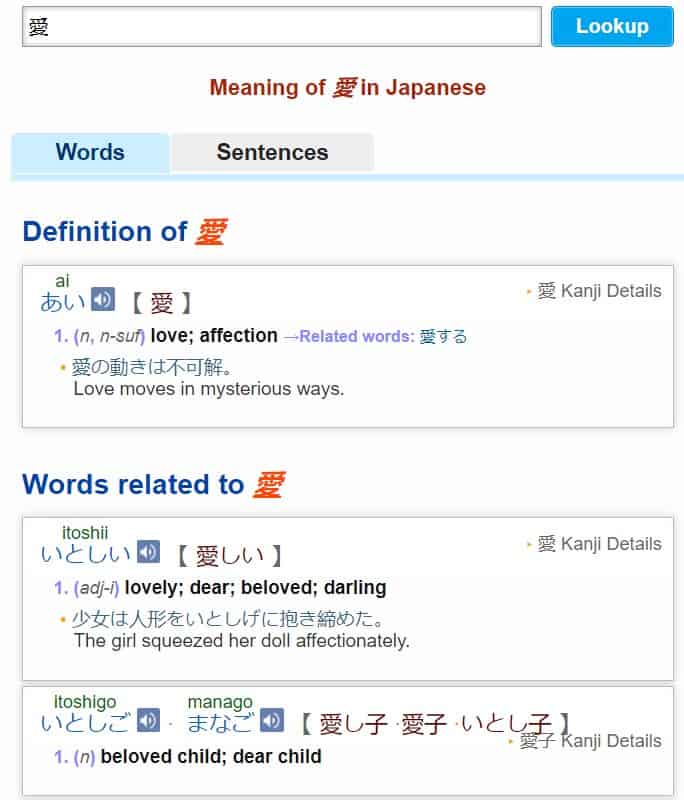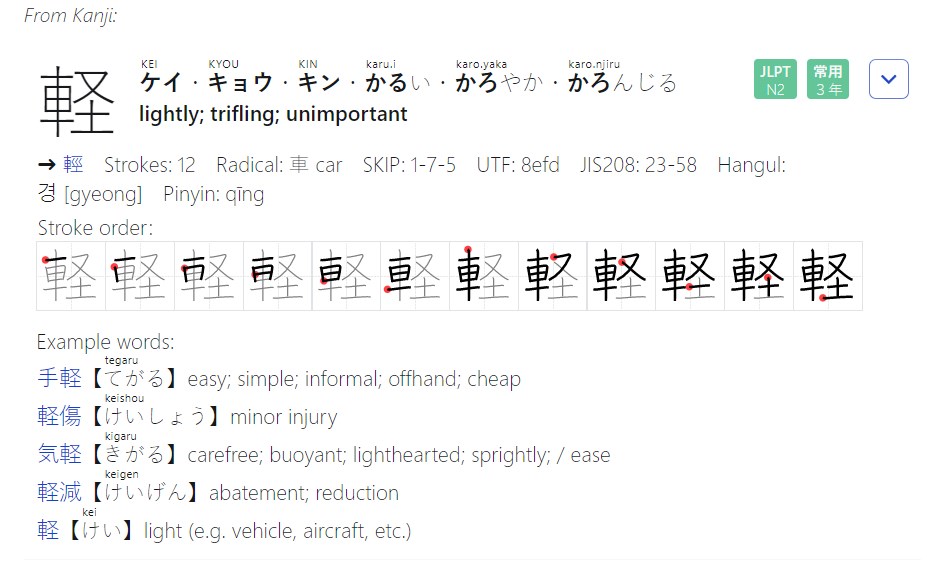Knowing a few basic Japanese words and holding a conversation can be very helpful in Japan, especially in a country where only a handful of people are fluent in English. Translation tools give full-sentence translations and pronunciation aids, while, for those who want to learn Japanese, dictionary-like tools provide examples of use, breakdown of kanji, and grammar information to help deepen your language skills. These tools will quickly become essential when you’re on the go, at work, or a first-time visitor of Japan. However, the wide variety and choices of online translators and dictionaries can be overwhelming. To help with decipher the jungle of translators and dictionaries, here’s our recommendation of the best free online Japanese translators and apps:
- The Best Japanese-English Translation Apps for Travelers in Japan
- Pocket Electronic Voice Translators
- The Best Japanese-English Dictionaries for Japanese Learners
- The Best Japanese-English Translation Tools For Businesses and Professionals
- A Note About How to Find Online Translators
- Conclusion: Review Your Translation Needs
The Best Japanese-English Translation Apps for Travelers in Japan
Travelers of Japan will want an easy-to-use, convenient translation app for those impromptu conversations you’ll inevitably have here in Japan. Here is a selection of some of the best online translation services for Japanese to English, and their various features for both oral and written use.
Google Translate
Google Translate is one of the most popular translators with some classic translation features. Entering a text in English results in the translation into Japanese with the three writing systems (hiragana, katakana, and kanji), and in romaji. Romaji is very practical for conversational use when you don’t know how to pronounce kanji or how to read the two syllabary alphabets. Users using Google Translate can occasionally have peculiar translation results, though is nonetheless an amazing technology.
There is also a vocal translator with voice input. But a huge asset is the scanning and camera feature, which can scan Japanese text. The user hovers the smartphone’s camera over the Japanese text, with kanji, hiragana, and katakana. Japanese syllabaries and kanji are captured, and the translation is instantly displayed in English. This scanning feature is helpful when reading menus and other signage, especially when you’re faced with unknown kanjis.

One small downside would be that Japanese translations often fall under a neutral or sometimes colloquial level. Also, in terms of vocabulary, Google Translate often presents modern words of English origin more than older words of Japanese origin. For example, it would rather prefer to translate “milk” into「ミクル」(miruku), rather than「牛乳」(gyūnyū).
To conclude, Google Translate appears to be highly useful for words, phrases, and short texts. It’s recognized as one of the best online translation tools perfect for general use by tourists and other short-term visitors, though perhaps not the most accurate tool for professionals.
Google Translate is available on browser and app (iPhone app on Apple Store for iOS, and Android app on Google Pay for Android).
Microsoft Translator
Microsoft Translator translates words or paragraphs, as well as texts entered by hand or by voice input. Thanks to a microphone function, it can translate instantly, so the user can hold a live conversation. The translation is displayed on a split-screen presenting the 2 languages. The Phrasebook contains sentences for tourists and business trips, useful to know how to use a word in a real discussion.
The app’s built-in camera viewer translates texts from recorded photos. In addition, the camera function allows documents (such as street signs or menus) to be translated on the street.
Microsoft Translator is also available as an app on Apple Store and Google Play.
Pocket Electronic Voice Translators
For more spontaneous discussions, pocket electronic voice translators can be used. The Japanese staff who can’t speak English may use it while speaking to foreigners.
Pocketalk
Pocketalk is a portable instant voice translation device. It relies on cloud-based translation engines to provide a vocal bi-directional translation powered by artificial intelligence. It is designed for face-to-face conversations and can translate long and complex sentences. It features a touchscreen, dual microphones, and noise-canceling headsets that allow translations in noisy environments. It also displays conversations in textual transcription.

Pocketalk doesn’t require a smartphone, but an internet connection is required. The Pocketalk S battery will last for 4.5 hours of continuous talking. If put into sleep mode, it will last for 2.5 days.
WT2 Edge
Also ideal for conversations, WT2 Edge from Timekettle is a hands-free, instant voice conversion translator using wireless headphones. Several modes of translations are available: with one or both users wearing headphones with the translation voice broadcasted by the smartphone, streamed through the earphones, and/or displayed on the smartphone screen.
An internet connection is required, though an offline English/Japanese translation package is available for download for offline translations. Earphones require a mobile app, with roughly 12 hours of active translation time. Since users will need to use the WT2 Edge earbuds, it is best to use them with friends or acquaintances.
The Best Japanese-English Dictionaries for Japanese Learners
There are many language teaching methods to learn Japanese. Books, websites, and apps provide tables of hiragana and katakana, grammar lessons, visual dictionaries, kanji dictionaries, dialogues, exercises, and much more. Here are some of the best Japanese-English dictionaries to help your Japanese language learning.
Jisho
Jisho is a powerful online dictionary that provides advanced grammar information. It indicates in a sentence which word is a noun, a particle, or a verb, and if the verb is transitive or intransitive.

Jisho has some unique specialties. Firstly, the drawing function enables users to search for translations by drawing a kanji: start drawing, and Jisho will suggest various kanji. In addition, kanji can be searched by radicals, multiple search terms, tags, and hashtags. Tags are useful for identifying words classified by word classes, kanji classified by topics, joyo kanji (常用漢字, a literacy baseline of kanji to know for daily life in Japan), or words used in the JLPT exams (standardized Japanese-Language Proficiency exams). There is also a voice functionality where users can search by saying a word or a phrase.
Romaji Desu
The Romaji Desu translator focuses on spoken Japanese and pronunciation. The input can be in Japanese (kanji, hiragana, katakana, and romaji), or in English. If you type the sentence in Japanese, the tools provide the transcription in romaji and audio pronunciation, and of course, the translation in English. While Japanese normally has no space between words, Romaji Desu breaks the sentences down into easy-to-read word blocks.

The romaji to kana converter converts romaji to hiragana and katakana. It is useful if you know the romaji form of a word or phrase and you want to learn how to write it in kana (仮名, the Japanese phonological units of hiragana and katakana) and kanji. Like some of the kanji dictionaries, Romaji Desu provides various kanji pronunciations: in onyomi (音読み, the Chinese reading which normally applies to compound kanji) and in kunyomi (訓読み, the Japanese reading normally used for one character and based on the pronunciation of native Japanese words). The kanji lookup indicates the number of strokes, the drawing order of kanji, and sample words.

J-Talk’s
J-Talk’s is especially advantageous for grammar fans. It transcribes a Japanese sentence into romaji (which aids in pronunciation) and easy-to-read word blocks. The tool indicates the grammatical classes of the words and categorizes them according to this criterion (e.g. highlight the nouns, all the verbs, etc.). There are several display modes to highlight specific information: romaji, kana, table.

Tangorin
With the dictionary and translation tool Tangorin, translations can be made by typing English or Japanese (romaji, kana, and kanji). It is possible to search by Japanese radicals, making it easier to discover other kanji with common or similar meanings. The grammar features are numerous and precise: katakana version of words, example words, conjugation tables, kanji diagrams for stroke order, and classification of the joyo kanji. Let us also mention example sentences with use cases and a proper names dictionary (a glossary of family names, places, companies, etc.). A few tags may be used to narrow down search results.
Tangorin is also available as a Google Play app.

Midori
The Midori app is a Japanese/English dictionary with approximately 910,000 entries. The search can be made by typing in kana or romaji, and a kanji by drawing its strokes. Each entry shows readings, meanings, kanji breakdown (list of components or radicals), and related words using the kanji. Roughly 6,000 kanji show its stroke order diagrams. Words are placed in 150,000 example sentences with furigana. Let us also mention proper names, place names, given names, company and product names. You can even personalize your app by editing notes on a kanji card.
Midori is available on the Apple Store. The app is completely offline, so no internet connection is required.

Imiwa?
Imiwa? includes a rich database of kanji, with many grammar information about words: grammatical class, onyomi and kunyomi readings, forms/conjugation of verbs, kanji breakdowns. The kanji mode focuses on kanji information (number of strokes, drawing, related kanjis, and JLPT level.) and provides related words and examples of phrases. A JLPT mode sorts the kanji cards according to your JLPT level. You can also bookmark and write notes.
Imiwa? Is available on AppStore and doesn’t require any internet connection.


The Best Japanese-English Translation Tools For Businesses and Professionals
Sometimes, Google Translate and other apps geared towards Japanese language learners don’t cut it, especially if you’re working in a business or professional setting. Here are our recommendations of translations tools for professionals.
DeepL
DeepL, the Linguee translator, is a popular online translation service. It is particularly suitable for longer sentences and paragraphs. DeepL is good for general use and professionals and does better compared to Google Translate for longer written translations to be used in a professional context.
One weak point is that neither romaji nor furigana (small hiragana that appears above kanji) is displayed in the Japanese text. Therefore, DeepL is adequate for written translations but probably less convenient for Japanese learners, or for those who cannot read kanji and want to use translations to speak.

DeepL is a special and powerful engine. It doesn’t provide a word-for-word translation but trains its algorithms and artificial intelligence to understand and translate texts. Then, based on a text corpus already translated, it tries to place the text in an appropriate context to provide a more careful, natural, and sensitive translation.
DeepL is also available as a desktop download.
Yandex Translate
The Russian site, Yandex Translate, has the advantage of providing three translation modes: Text, Site, and Document. It translates words, sentences, and texts, and it also provides a translated website pages by inputting a URL. It is also possible to upload files from your hard disk.
A Note About How to Find Online Translators
When looking for an online translator, one must distinguish a dictionary or a phrasebook from a translator service. So, on your browser or on an app store, it’s best to search using the word “translator” or “translate”, rather than directly searching “Japanese translator”, so as to broaden your search field to multi-language translators. On the app’s store page, take a look at the comments, feedback, reviews, and ratings.

Since many accurate translation services are free, we recommend avoiding purchasing a translation app without testing it beforehand.
A Word of Caution When Using Online Translators
Users should note that translators do not always represent the most natural way to speak Japanese. Many tools translate word for word. They may translate pronouns, which are rarely used in Japanese. They often don’t use kenjougo, 謙譲語 (humble language) and sonkeigo, 尊敬語 (honorific language).
Machine translation doesn’t always correspond to how a native speaker would speak and rather allows one to express general ideas. Ultimately, grammatical knowledge is necessary to contextualize words and to refine translations further for appropriate conversational context.
Conclusion: Review Your Translation Needs
This list of translators is far from exhaustive. Many Japanese translation tools are available on browsers and as apps for your smartphone. The choice will depend on what your needs are. If you can’t read hiragana or katana or need to talk, a translator with a romaji transcription will be very important for pronunciation. If you want to know a vocabulary in Japanese, to have the accurate meaning and translation of a word, or if you need to write in Japanese, a translator with a focus on the Japanese syllabaries and the kanji will be essential. In daily life, on the street, or on a trip, visual translation services are valuable assets. Google Translate’s camera feature is especially appropriate to translate street signs and notices. As there are numerous suitable and accurate translation tools, the best way to take advantage of them is to mix uses according to the situation and the need.













No Comments yet!